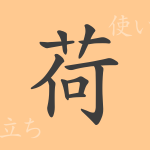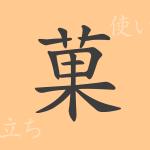Japan’s character culture is profound, and among its elements, Kanji is known for its complexity and beauty. One of the commonly used Kanji, “華” (Hana), evokes a sense of beauty and splendor through its sound, and is utilized in various forms in the daily lives of Japanese people. In this article, we delve into the allure of “華” (Hana), exploring its origins, contemporary usage, and even related idioms and proverbs.
The Origin of 華 (Hana)
The Kanji “華” (Hana) was originally used in ancient China to represent plants and trees that bloom. Its form combines the grass radical with “化” (Ke), symbolizing the transformation of plants as they bloom into flowers. Over time, “華” (Hana) has come to mean not just flowers, but also splendor and luxury.
The Meaning and Usage of 華 (Hana)
Beyond its original meaning of flowers, the Kanji “華” (Hana) is also used metaphorically to describe luxury, beauty, and excellence. For example, the word “華麗” (Karei) conveys a sense of beauty and elegance, while “華々しい” (Hanabana-sii) implies prominence or success.
Readings, Stroke Count, and Radical of 華 (Hana)
The Kanji “華” (Hana) is used with various readings in Japanese.
- Readings: On’yomi as “か” (Ka), Kun’yomi as “はな”
- Stroke Count: A total of 10 strokes
- Radical: 艸 (Kusakanmuri) or the grass radical
Idioms, Phrases, and Proverbs Using 華 (Hana) and Their Meanings
There are many idioms, phrases, and proverbs that include “華” (Hana), each with its unique meaning and nuance. For instance, “華々しい” (Hanabana-sii) describes a state of success or fame, “華やか” (Hana-yaka) refers to an appearance that is beautifully attractive, and “門外不出の華” (Mongaihusyutu-no-hana) denotes something of great value that is not disclosed to the public.
Summary of 華 (Hana)
The Kanji “華” (Hana) is a character that exudes beauty and luxury, even from its very form. From its origins to its modern-day applications, idioms, and proverbs, its range of use is extensive and plays a significant role in the Japanese language. Understanding the unique charm of “華” (Hana) within Japanese culture and language enables richer expressions and deeper appreciation of its nuances.

























